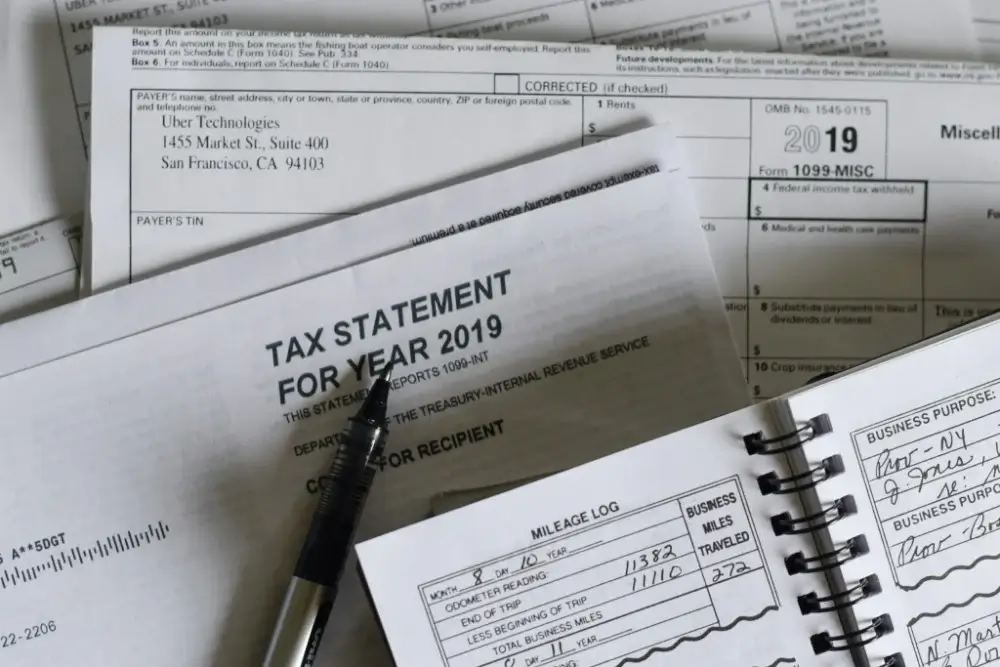50 30 20 Rule: Personal Budgeting Method Made Easy
Do you want to get your finances in order but don't know where to start? The 50/30/20 rule is a great way to get started! This easy budgeting method is easy to follow and can help you stay on track with your spending. In this article, we will discuss the 50 30 20 rule and how it can help you create a budget that works for you.
The origin of the 50/30/20 rule
Rule 50/30/20 comes out as part of the book The Ultimate Lifetime Money Plan by US Senator Elizabeth Warren. In fact, researchers from the financial planning industry have concluded you can get your personal finance under control without a complicated budget by using the rule 50/30/20 to control what you do with your net pay. Especially when you have the luxury of having a steady paycheck.
Who is this budget good for?
The 50/20/20 Budget is ideal to ease into the budget process when starting a personal finances journey since you only need to keep track of just three categories.
When you begin budgeting, putting your spending under different categories is often daunting. A big plus with this budget is that this budget has streamlined integration into budgeting apps like PocketSmith.
The flexibility in the budget should give you a good chance of staying focused on your goals. Since it is possible to manage just three large categories, you should not worry about staying in the same category.
The 50/30/20 rule budget can be a great tool for people who don't have the patience to track their spending in detailed categories
The 50/30/20 budgeting method requires only that the budgets be categorized and tracked in three major categories: want/savings or debt /. It reduces the need to detail your financial situation to focus more on detail instead.
To determine the amount per category, you must first calculate after-tax income. You can simply pay the amount you received from the paychecks you made and add any other deductions that are not taxed. This can include items that could include insurance and retiree contributions.

Who should look for a different budgeting strategy?
As you get comfortable with this 50/30/20 budget, it might be more liberating for you. It can be difficult to spend 30% of your monthly income on things that are not essential to the goal of your money.
If you find yourself failing to meet your financial goals you should think about another option. Unfortunately, the budget allows for quick hiding of the larger category. If your grocery budget is big enough, you could easily hide some extra expenses.
You can easily cut down on these expenses. But it may not be worth considering it for a long time when you don’t consider the “essential costs".
Tell me the 50/30/20 rule of thumb?
This 5/30/20 rule of thumb provides simple and straightforward tips about budget planning. In this sense, your monthly after-tax income includes your take-home pay and adds back in any payroll deductions for health insurance, 401(k) contributions, and other automatic savings.
50% to Needs
The 50% of your monthly take-home pay should go towards your essential living expenses (needs). These are the expenses that are required for you to maintain your current lifestyle. They include items like housing, transportation, food (basic groceries), utilities, and minimum loan payments.
30% to Wants
The 30% of your monthly take-home disposable income can be spent on non-essential expenses or wants. This kind of discretionary spending is reserved for items that you would like to have but don't necessarily need. They include items like travel, entertainment, and dining out.
20% to financial goals
The final 20% of your monthly take-home pay should be allocated to savings or debt repayment. This can include items like emergency savings, retirement contributions, and student loan payments.

Why is a 50/30/20 budget necessary?
Consumer.ftc.gov says it can be hard to determine the reasons people spend their money for a specific purpose when they have the same idea of budgeting based on a 50/60/20 plan to achieve that goal. This is similar to an “eye on trophies”. If you feel like spending money, you can make sure that it brings back the shopper's soaring senses.
Tell me the reason you want to start budgeting? Tell me the goal of my life? Also, if you plan to save mainly for something specific, find an absolute number for determining a budget to make sure the spending plan is in order during any given week.
Is the 50/30/20 rule budget good for you?
Overall, 50/30/20 is an efficient budgeting approach. It depends however upon your circumstances. Keeping the three categories to yourself can make it easier to focus on a specific expense rather than trying too much to categorize each individual one in one. For some people, a lack of structure can hinder their decision-making.
You must ultimately determine whether budgets should be lower in detail or more detailed. Another potential problem for the 50/30/20 rule budget is that money is divided into need, desires, and savings or debt.
Flaws to be aware of
Although this is an extremely simple way of budgeting that's not going to work for everyone—this is why.

It's quite vague
While this easy budgeting method can be used quickly, there is a tendency to hide bad spending habits in your budget and buy unnecessary items because you can.
If you are very wealthy you spend 30% to 20% on your lifestyle choices which are really worth putting into a good savings plan for a bigger return on investment. It's not meant that you should not invest in entertainment but it may be better if you select the things you really like. Depending on the cost of living, you will need to pay about $4,000 per month to still have adequate life.
It doesn't favor debt payoff
The main drawbacks are that the 50-30-20 budgeting method does not give much flexibility for debt payments. We'll take an example of 2,500 per month which leaves about $250 as the debt payment for the debts.
Even with 20% of your salary credited for paying debt, it could still seem restrictive, especially if your debt payment is more than 20% of your salary. For your minimum loan payments of $500 and $300 a month, you will need 10-20 percent of your income.
It's not a forever budgeting method
The final point is that using a 50-3020 Budget Plan is not a reliable and effective strategy to manage your finances. This puts saving on the back-burner and this won't be possible for longer. Having enough money is the key to maximizing the savings rates in your future. Your requirements and desires are changing. You could have spent up to 50% of your income on a monthly budget for the future.
Why does 50/30/20 budgeting work?
If you want to learn how to budget your money, this approach is a very effective way. The spending categories are divided into three different types. You will discover ways you can manage your budget and track expenses.
Most Americans save less than 10%. If you are planning on saving more then this budgeting method may be helpful. Then, change your perspective to an increased savings rate of 200%.
How to apply and use the 50/30/20 rule of thumb for budgeting?
Most people save less and unwittingly spend more. The 50/30/20 rule of thumb can help reduce excess spending and overspending. By putting aside a bit of money on things that really do not make a huge impact, you can pay more attention to things that actually do.
How Does it Work? In order for you to implement the budget rules, you will have to determine your income ratio and classify your expenditure by your income. Let me explain the process.
Evaluate and adjust your spending to match the 50/30/20 rule
Now that you know the amount of money going towards a specific need or desire a month, then you can begin adjusting your budget according to the rule of thumb of 50/30/20.
How do we know if we have enough cash to spend each month on something we want? A desire is not an extravagant thing—it's merely a nice little thing allowing for the enjoyment of life. As cutting back on your needs is often an extremely complicated and difficult undertaking, you need to determine what you need to cut out in order to keep your income under 30 %. The lower you spend on your needs, the higher your probability of meeting the 20% savings target.
Categorize your spending for the past month
For the best way to understand how you used your income over the last month, you must find out how much you spent it on. Get your bank statements from the last 30 days, separate your expenses into three categories: needs, wants, or money. Remember, the cost of the house is an essential cost that cannot be afforded. A wish provides an alternative luxury you cannot afford such as staying in a five-star hotel.
Calculate your after-tax income
How can I use 50/30/20/20 Budget Rules? You can also earn money by working freelance; you can pay taxes; you can pay taxes and your business expenses. When you have a stable income it becomes easier. Check your Paylip to know what money you deposited every day to the account. You should add this to an existing paycheck if your employer has automatically deducted your salary for medical insurance.
Easy ways to track your spending
Budgeting involves tracking your spending. However, if you make it simple by using a spreadsheet or pen and paper it can quickly become difficult. Does anyone really care for every expense? Here, budget apps are extremely helpful. We're going to see some of our favorite items for implementing 50/30/20 budgets.
PocketSmith
PocketSmith brings budgeting software to its own. The program is based on the same basic principles of financial planning. It helps organize your costs and makes logical sense in terms of your situation. PocketSmith can manage all your personal finances. This is helpful in making informed decision-making regarding your budgets and investments. This useful tool has an online version for you. The cost of unlocking premium services is 9.95 dollars per month.
50/30/20 rule spreadsheet
A 50/30/20 rule calculator online can help provide a general overview of the best 50/30/20 rule budgets. However, 50/30/20 rule spreadsheets will help create a better overall budget.
Budgeting Journey
Keeping your budget simple is the best way to make it a lasting change. With just three categories to keep track of, you can get started with this easy plan with a simple budgeting journey that will help keep things in perspective and on track for success!

Monthly Income
By tracking your take-home income vs. your monthly expenses, you will be able to allocate more money towards your savings goals. That additional money could go towards a down payment or health care. The 50 30 20 budget rule is the right budget method for people who can easily incorporate it into their financial lives.
After-tax income
Your monthly take-home pay is the amount of money you have left after taxes have been deducted from your paycheck. This is the amount of money you have to work with when creating a budget.
The 50 30 20 rule of thumb is a simple way to budget your after-tax income. 50% of your income should go towards essentials, like rent, food, and transportation. 30% of your income can be spent on wants, like entertainment and going out to eat. 20% of your income should be saved for future goals, like retirement or a down payment on a house.
Let’s say you bring home $2000 every month after taxes. 50% of $2000 is $1000, so that leaves you $1000 to spend on essentials each month. 30% of $2000 is $600, which means you have $600 to spend on wants each month. 20% of $2000 is $400, so you should save $400 each month.

Savings and debt repayment
The average American household has only $5000 in their savings account. The best way to save money is to create a budget. The 50/30/20 basic rule can help you create a budget. This rule of thumb says that 50% of your income should go to necessities, 30% to wants, and 20% towards savings and debt payments.
In your process of achieving your financial goals, you must establish an Emergency Fund as a first step to get in control of your personal finance. Such a fund is key to have for when the unexpected comes up. Something as simple as a broken tooth can bring you an unexpected expense of several hundred dollars.
The rule of thumb is to set aside at least two to three months' worth of your monthly living expenses as a fund for emergencies. To learn more about how to create an Emergency Fund, we recommend you read also our article about the topic.
Once you have created your Emergency Fund, you can concentrate on contributing some money towards your retirement savings and on paying your debts.
Debt is a huge issue for many Americans. In fact, according to NerdWallet, “The average American household is carrying credit card debt has a balance of $15,733.”
Making extra payments towards your debts will help you pay them off faster and save on interest. If you can, try to make more than the minimum payment each month. For example, if you have a credit card with a $1000 balance and a 20% annual interest rate, your minimum monthly payment would be $25. But if you paid $50 each month, you would pay off the debt in 18 months and save $275 in interest.

How does credit card debt go under the 50/30/20 rule?
Payback on unsecured debts is viewed as a financial goal in general. So, you should put 20% on your debt to repay it.
Debt is something that people have to deal with in their lives. Some people may view paying off existing debt as a financial goal, while others may not care as much about it. However, there are some factors to consider when trying to pay off debt as quickly and efficiently as possible.
For example, you should make sure that your monthly payments fit within your budget and that you have enough money saved up to cover the total amount of debt you want to pay off. You also need to be careful not to overspend or get into any other types of debt while you are working on paying off your existing debt.
If you can manage all of these things successfully, it may help you achieve your financial goal of paying off debt sooner rather than later.

The Ultimate lifetime money plan
Do you want to know the secret to a lifetime of financial security? It starts with understanding how your money works. A budget is the key to having control over your finances and can help you save money on your everyday expenses. The 50/30/20 budgeting rule can help you stay within your financial limits and make sure that you're able to enjoy life without having to worry about money.
Start by creating a budget chart and track your spending each month. This will help you identify where you can cut back and save money. Also, make sure to have a savings plan in place so that you have enough money when emergencies happen. Having a strong financial foundation will allow you to live comfortably for years to come.

Bottom line
For those that dislike the rigors of budget planning, 50/20/20 rules are a simple way to reduce the risk of losing money. It is not difficult to track the details in an ordinary budget when you have only three major categories.
The 50/30/20 rule is a great way to get your finances under control without a complicated budget. The rule says that you should spend 50% of your income on necessities, 30% on fun and entertainment, and 20% on savings and investments. This rule can help you stay within your financial limits and make sure that you're able to enjoy life without having to worry about money or feeling restricted.
Unfortunately, this 50/30/20 budgeting rule will not be adapted for everybody because of individual circumstances. You can change these percentages to meet your personal circumstances and financial goals, but you should remember that you can change them accordingly. If it's not enough then there are other budget choices.
The 50 30 20 rule is a great way to stay within your budget and reach your financial goals. Give it a try and see how it works for you!
Do you have any tips for budgeting your after-tax income? Share them in the comments below!
